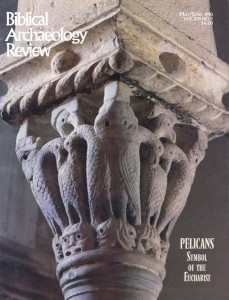
Some remnants of Christendom’s most ancient shrine, the “mother of all churches,” still stand in Jerusalem says Bargil Pixner in “Church of the Apostles Found on Mt. Zion.” Dating to about 80 A.D., the Church of the Apostles—marking the place where the apostles prayed after Jesus’ ascension to heaven, and the traditional site of the Last Supper and of Peter’s Pentecost sermon—has gone unrecognized until now because the original Judeo-Christian synagogue-church was altered by the Crusaders and venerated by them as the Tomb of King David. Using both archaeological and written evidence, Pixner traces the site’s complex architectural history through a succession of fascinating transformations.
In carrying out the dig that led to his article, Pixner experienced the rare convenience of excavating in his own “backyard.” A Benedictine monk, he lives in the Dormition Abbey, which stands on top of some of the walls and column bases from the Crusader church that incorporated the first-century synagogue-church. Pixner teaches Biblical archaeology on the Abbey’s theology faculty. He is also the co-author, with George Hintilian, of The Glory of Bethlehem (Jerusalem Publishing House, 1981). His previous excavations include the southwest tower of the Gate of the Essenes in Jerusalem and Bethsaida-Julias, by the Sea of Galilee.
Already a library member? Log in here.
Institution user? Log in with your IP address.

